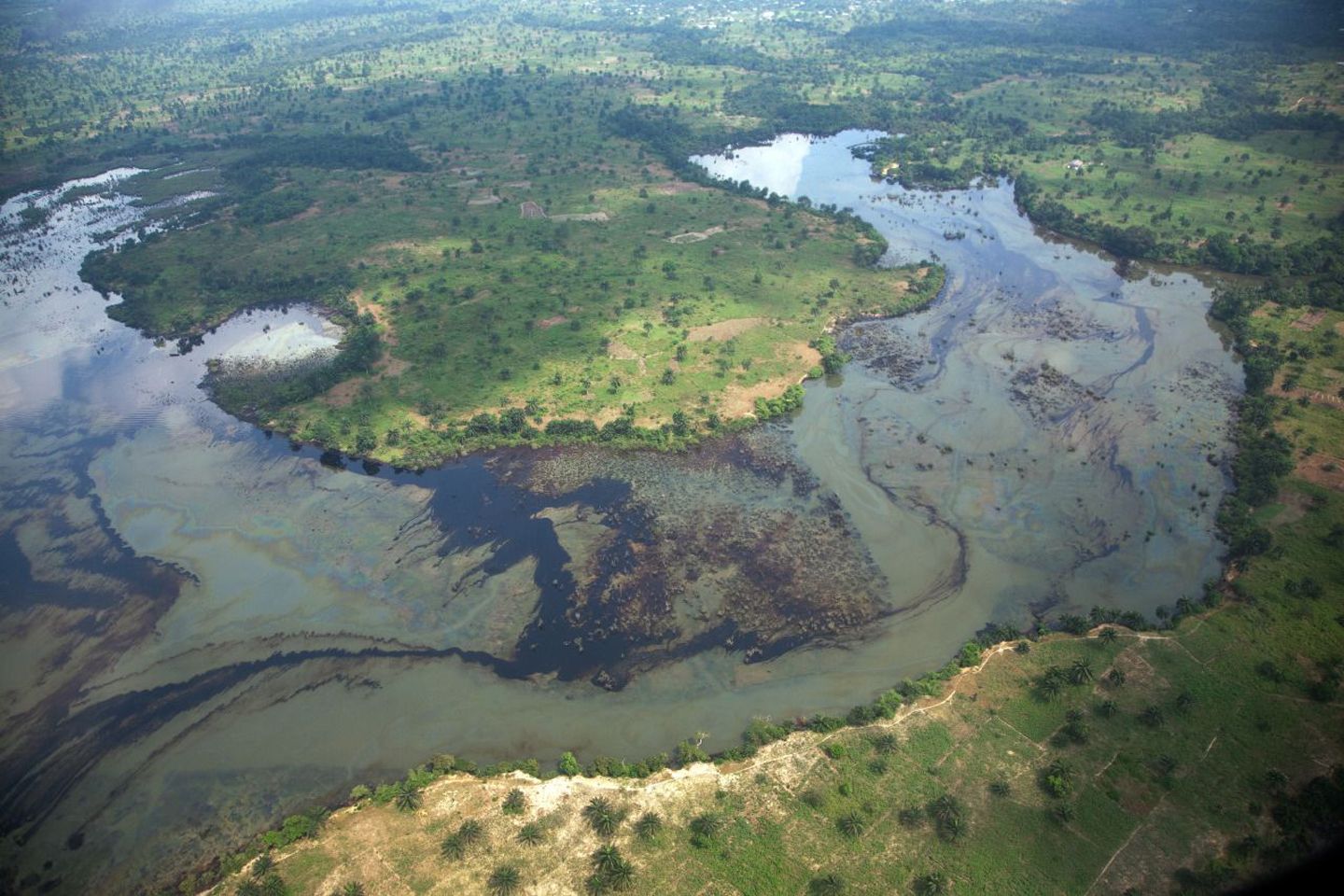Lazarus Tamana, European Coordinator of the Movement for the Survival of the Ogoni People. Email to the author, March 17, 2019.
Michael Watts, “The Sinister Political Life of Community: Economies of Violence and Governable Spaces in the Niger Delta, Nigeria,” in The Seductions of Community: Emancipations, Oppressions, Quandaries, ed. Gerald W. Creed (Santa Fe: SAR Press, 2006), 101–142.
This history of violence began with the Atlantic slave trade. It is important to point out that no Ogoni person was ever enslaved during the Atlantic slave trade. See Ken Saro-Wiwa, Genocide in Nigeria: The Ogoni Tragedy (Port Harcourt: Saros International Publishers, 1992), 14.
Rob Nixon, Slow Violence and the Environmentalism of the Poor (Cambridge: Harvard University Press, 2011), 111.
Amnesty International, A Criminal Enterprise? Shell’s Involvement in Human Rights Violations in Nigeria in the 1990s (London: Amnesty International, 2017), ➝.
See Loreta Napoleoni. Terror Incorporated: Tracing the Dollars Behind the Terror Networks (London: Penguin Random House, 2005).
Kelvin Ebiri, “How Politics of OML 11 Reignites Ogoni Resistance Against Expropriation,” The Guardian, June 20, 2020, ➝.
This incursion is of grave concern for a people that has for so long been at the sharp end of fossil-capital’s greed. MOSOP activists know all too well how violence accompanies the Nigerian armed forces sent to protect oil infrastructure. They are organizing once again in resisting the Shell State. Lazarus Tamana, conversation with the author, March 13, 2019.
Amnesty International, On Trial: Shell in Nigeria (London: Amnesty International, 2020), 18, ➝.
Joel Koupermann, spatial analysis of pipelines carried out inside Ogoniland territory, INTERPRT.
Cited in Nixon, Slow Violence, 111.
“Making Ecocide a Crime,” Stop Ecocide, ➝.
The feminist theorist Adriana Cavarero makes a similar point in her understanding of violence experienced by civilians in contemporary conflicts. See Adriana Cavarero, Horrorism: Naming Contemporary Violence (New York: Columbia University Press, 2009).
Saro-Wiwa. Genocide in Nigeria, 68. Twenty-two years after the catastrophic blowout in Bomu, Saro-Wiwa described the landscape as a barren and useless wasteland. A similar blowout due to equipment failure took place in 2008 in Bomu which has not been cleaned up. See Karina Igonikon, “Di Ogoni community wey no dey fit swim or fish for dia river,” BBC News Pidgin, ➝.
United Nations Environment Programme, Environmental Assessment of Ogoniland (Nairobi: United Nations Environment Programme, 2011). The UNEP study is the first independent environmental impact assessment (EIA) carried out in Ogoniland. The previous “Niger Delta Environmental Survey” launched by Shell during Saro-wiwa’s trial has been thoroughly discredited by activists as a public relations stunt. See Okonto and Douglas, Where Vultures Feast, 168. Importantly while it is not all encompassing, the UNEP report’s scientific evidence is trusted by the Ogoni.
Richard Steiner, Double standard: Shell practices in Nigeria compared with international standards to prevent and control pipeline oil spills and the Deepwater Horizon oil spill (Amsterdam: Milieudefensie, 2010). Milieudefensie’s report provides details of how Shell has conducted its petroleum operations far below common standards it follows elsewhere in the world.
Amnesty International, Bad Information: Oil Spill Investigations in the Niger Delta (London: Amnesty International Publications, 2013).
Christian Kpendai, WhatsApp voice call interview with the author, June 19, 2020.
Scott Pegg and Nenibarini Zabbey, “Oil and water: the Bodo spills and the destruction of traditional livelihood structures in the Niger Delta,” Community Development Journal 48 (2013): 391–405.
Amnesty International, The True Tragedy: Delays and Failures in Tackling Oil Spills in the Niger Delta (London: Amnesty International, 2011).
John Vidal, “Shell Announces £55m Payout for Nigeria Oil Spills,” The Guardian, January 7, 2015, ➝.
Lazarus Tamana. WhatsApp voice call interview with the author, June 19, 2020. See also Kelechukwu Iruoma and Ruth Olurounbi, “Nigeria’s silent killer: Compensation to the communities,” The Africa Report, April 30, 2020, ➝.
“It’s Ogoniland today, but it could be your home tomorrow,” Minority Rights Group International, July 18, 2019, ➝.
“API Guidelines for Right-of-Way Activities,” American Petroleum Institute, August 2018, ➝.
Transparency International, Military Involvement in Oil Theft in the Niger Delta (London: Transparency International UK, 2019), ➝.
As MOSOP activists and others have pointed out, UNEP’s landmark report, while highlighting the proliferation of bunkering related spills, failed to examine its root causes.
A good example of NIMBY and environmental racism, governments in the global north have relegated acid rain to the past while northern corporations remain responsible for acid rain in the Niger delta. See Environmental Rights Action and the Climate Justice Programme, Gas Flaring in Nigeria: A Human Rights, Environmental and Economic Monstrosity (Amsterdam: Environmental Rights Action and the Climate Justice Programme, 2005).
UNEP, Environmental Assessment of Ogoniland, 189.
Inspired by the Bodo community’s lawsuit, the Ogale and Bille community have filed lawsuit themselves in UK courts against Shell. See “Supreme Court grants permission to appeal to Nigerian Communities in their fight against Shell,” Leigh Day, July 24, 2019, ➝.
Anna Bruederle and Roland Hodler, “Effect of oil spills on infant mortality in Nigeria,” PNAS 116, no. 12 (March 2019): 5467–5471.
Bariloful Atea, WhatsApp voice call interview with the author, June 19, 2020.
Ochuko Anomohanran, “Determination of Greenhouse Gas Emission Resulting from Gas Flaring Activities in Nigeria,” Energy Policy 45, no. 1 (June 2012): 666–670.
Kpendai, interview with the author, June 19, 2020.
Brenda Ekwurzel et al., “The Rise in Global Atmospheric CO2, Surface Temperature, and Sea Level from Emissions Traced to Major Carbon Producers,” Climatic Change 144, no. 4 (October 2017): 579–590. See also Paul Griffin, The Carbon Majors Database: CDP Carbon Majors Report (London: CDP Worldwide, 2017).
Atea, interview with the author, June 19, 2020.
Nnimmo Bassey, To Cook a Continent: Destructive Extraction and the Climate Crisis in Africa (Cape Town: Pambazuka Press, 2012), 121.
Roy Doron and Toyin Falola, “The Nigerian Activist whose Death Shamed Shell,” interview by Portia Roelofs, Jacobin, November 10, 2019, ➝.
Okonto and Douglas, Where Vultures Feast, 118.
Oceans in Transformation is a collaboration between TBA21–Academy and e-flux Architecture within the context of the eponymous exhibition at Ocean Space in Venice by Territorial Agency and its manifestation on Ocean Archive.
